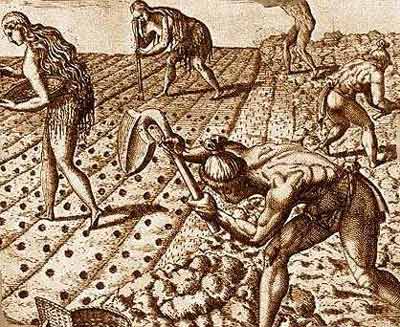Importance of Barley
 How important is barley to mankind? It is an extremely versatile cereal grain
that can be used in a multitude of foods, as animal feed, and is one of the
direst ingredients in the beer making process. Barley has many uses from skincare to hair
benefits to health benefits, where it has a great source of nutrients, antioxidants and minerals. When we take
a look back in history, barley grains can be traced back to 10,000 BC in
Southwest Asia in an area known as the “Fertile Crescent” where it was one of
the first cultivated plants. With a
post-Ice Age climate, the area was warm and steady, yielding perfect conditions
for barley cultivation. From this easy
cultivation, nomads began transitioning from hunter-gatherers to agriculture
and farming. Barley domestication led to
domestication of other plants and animals, and a new form of society and living
known as the Neolithic Revolution.
How important is barley to mankind? It is an extremely versatile cereal grain
that can be used in a multitude of foods, as animal feed, and is one of the
direst ingredients in the beer making process. Barley has many uses from skincare to hair
benefits to health benefits, where it has a great source of nutrients, antioxidants and minerals. When we take
a look back in history, barley grains can be traced back to 10,000 BC in
Southwest Asia in an area known as the “Fertile Crescent” where it was one of
the first cultivated plants. With a
post-Ice Age climate, the area was warm and steady, yielding perfect conditions
for barley cultivation. From this easy
cultivation, nomads began transitioning from hunter-gatherers to agriculture
and farming. Barley domestication led to
domestication of other plants and animals, and a new form of society and living
known as the Neolithic Revolution.
Barley is the fundamental raw material in beer. Brewing dates back to Mesopotamia where this
“barley water” would be used for various ways: from just a normal drink to
medicinal purposes where it was even considered “healthier than water.” Different types of barley are used to produce
different types of beers. The process of
malted barley is when you allow the barley seed or grain to germinate (sprout)
to a certain point where it is dried after.
The seed is soaked in water for about 40 hours, then drained and held at
a steady temperature for about 5 days until it begins to sprout. The barley is then dried slowly for about 30
hours. This germination process converts
the starches to sugars by enzymes that are created during the process, in order
to be turned into alcohol by the yeast.
Carlsberg prides themselves in their brewing quality,
especially with their cultivation of raw materials like barley. The company does not genetically modify their
crops, but have researchers developing this technology in case it becomes okay
to use in the future (which they believe it will be). They have the largest R&D and laboratory
for brewing in the world. Carlsberg
Laboratory identifies “advantageous trains in barley mutants, old cultivars and
elite varieties” and “by incorporating these traits we secure well adapted barley
varieties for the future” (carsberglab.dk).
Barley is a wonder-plant that is currently the fourth
largest crop in the world. It has a
quicker growth period than most crops and is able to be grown in a multitude of
climates, able to resist drought and colder temperatures. Barley led to the domestication of plants and
animals and a change in living conditions that was monumental.
Barley Fun Facts!
1) Breakfast cereals often contain barley, either directly or as a malt
2) Different flavors in whisky are imparted by differing malts
3) Pearl barley is ground to remove the outer husk. It has been a common ingredient in our diet for centuries
4) Barley is often grown for animal feed on a farm but is a common ingredient in many sorts of animal feed like dog food
5) Barley flour is not often used for baking, but does find its way into specialty breads
Source: http://www.ukagriculture.com/food/fast_facts.cfml?Food_name=Barley
Picture Sources: http://www.starch.dk/isi/starch/img/barley.JPG
https://blogger.googleusercontent.com/img/b/R29vZ2xl/AVvXsEh0rjA3FV4MFyF5OygVhSZ6lftlsi6ryOxLgRUQCP1un99QcytqLNaiSe8cvhK_09J1hndHro9ZWwp3t6GDKjlpTQODJw_0Qy1DgeMdJTEuMqxibyn11O65N_9OQejo1UZJnjFzDZfOxQRc/s1600/Pearled+Barley+vs.+Hulled+Barley.JPG
http://www.faceofmalawi.com/wp-content/uploads/2014/08/carlsberg.jpeg
http://timeforhistory.weebly.com/uploads/1/3/5/9/13599610/2517816_orig.jpg
Check this site out! http://www.carlsberglab.dk/Pages/default.aspx
Source: http://www.ukagriculture.com/food/fast_facts.cfml?Food_name=Barley
Picture Sources: http://www.starch.dk/isi/starch/img/barley.JPG
https://blogger.googleusercontent.com/img/b/R29vZ2xl/AVvXsEh0rjA3FV4MFyF5OygVhSZ6lftlsi6ryOxLgRUQCP1un99QcytqLNaiSe8cvhK_09J1hndHro9ZWwp3t6GDKjlpTQODJw_0Qy1DgeMdJTEuMqxibyn11O65N_9OQejo1UZJnjFzDZfOxQRc/s1600/Pearled+Barley+vs.+Hulled+Barley.JPG
http://www.faceofmalawi.com/wp-content/uploads/2014/08/carlsberg.jpeg
http://timeforhistory.weebly.com/uploads/1/3/5/9/13599610/2517816_orig.jpg
Check this site out! http://www.carlsberglab.dk/Pages/default.aspx



I was just wondering how "Barley domestication led to domestication of other plants and animals"?
ReplyDeleteThanks Tyler that is a good question! Once villagers were able to domesticate barley, they used similar techniques for the domestication of other plants where they would collect and plant seeds in order to grow them and cultivate them. After barley and wheat, lentils and types of peas were domesticated and grown. About the same time they domesticated plants, people in Mesopotamia began to tame animals for meat, milk, and hides. Hides, or the skins of animals, were used for clothing, storage, and to build tent shelters. Humans would also raise and care for livestock to further increase crop cultivation efficiency!
ReplyDelete